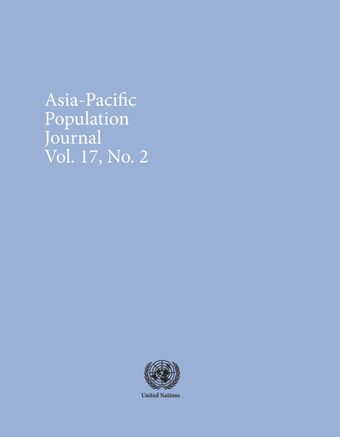-
Fertility decline, family size and female discrimination: A study of reproductive management in East and South Asia
- Source: Asia-Pacific Population Journal, Volume 17, Issue 2, Jul 2002, p. 11 - 38
-
- 08 Jul 2002
Abstract
Contrary to demographic expectations and in defiance of historical experience elsewhere, widespread and continuing son preference in much of Asia has not proved to be an impediment to progressive or rapid fertility decline. Indeed, one of the most significant features of the twentieth century has been the dramatic decline in fertility and explicit preference for smaller families in much of East and South Asia which, far from reducing, has exacerbated son preference leading to increased discrimination against daughters. An examination of the masculinity rates, sex ratios at birth and gender-disaggregated infant and child mortality rates, all point to excess female mortality in most East and South Asian societies. A study of demographic narratives for each country suggests that, region-wide, there is an increasing tension or conflict between preferred family size and preferred family-sex composition which is only resolved by intensified reproductive management, technological intervention and excess female mortality. Simultaneously, ethnographic studies in villages and cities across the region suggest that beliefs and behaviours associated with the management of reproduction are rooted in notions of gender difference, complementarity and unsubstimtability. Within the new and now preferred smaller families, daughters, rarely able to substitute for sons, are subject to new trade-offs with daughters more than ever before “taking the place of’ or “limiting opportunities for” sons. This paper summarizes demographic trends in and patterns of female discrimination associated with fertility decline and smaller family size in East and South Asia, before turning to ethnographic voices in China and India to investigate and identify the premises or rationales underlying family management of reproduction. Combined demographic and anthropological approaches suggest that there is a demographic, development and gendered coherence in East and South Asia combining rapid or progressive fertility decline, rising and sometimes rapid economic development and common cultures of gender which have all contributed to an intensification of daughter discrimination.





